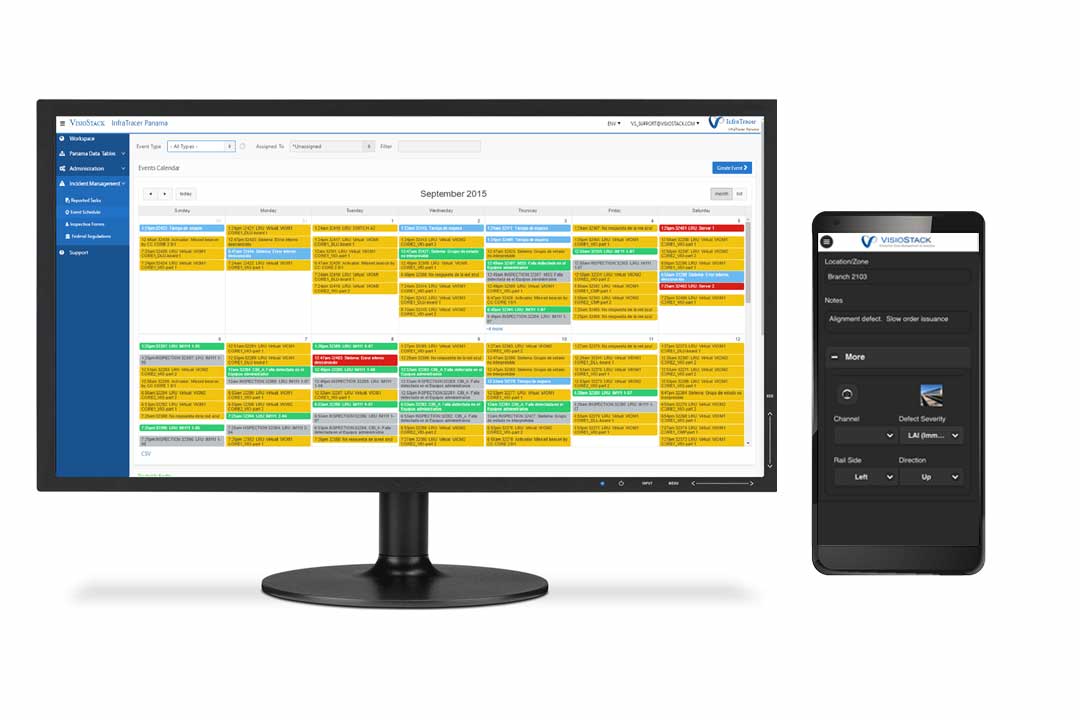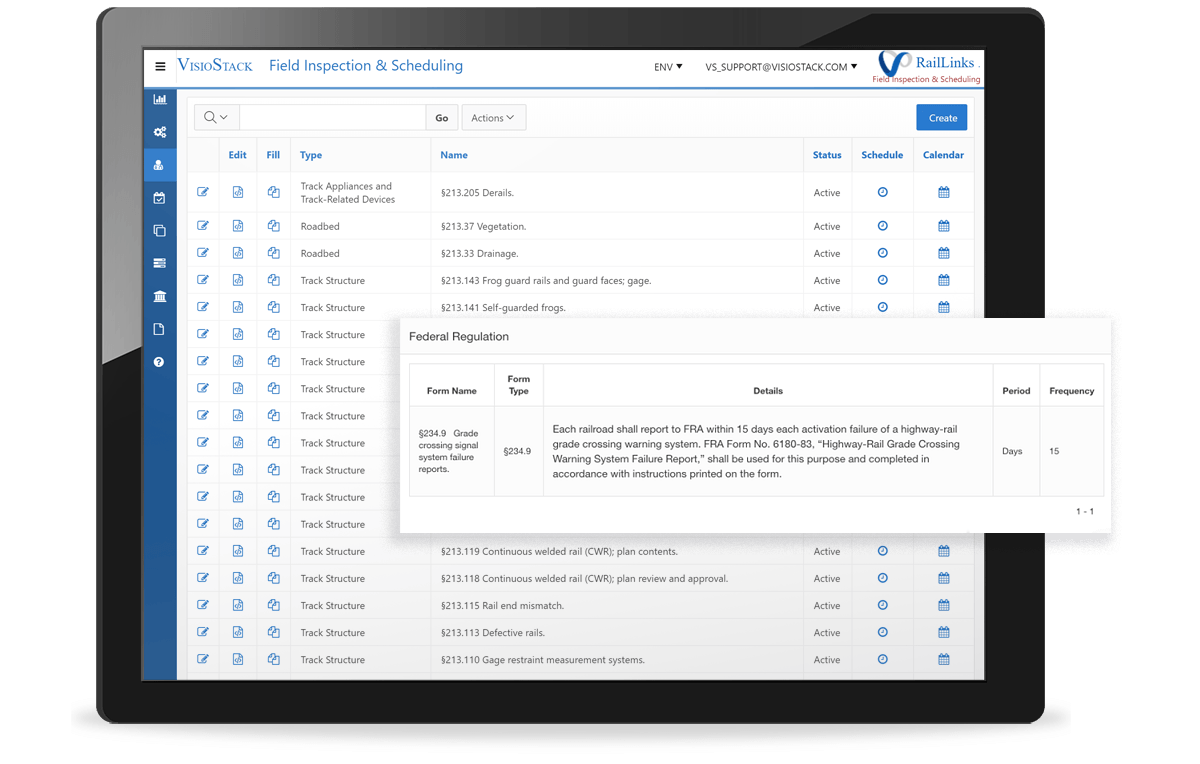
Customizable Inspection Forms
Standardize the way field data is collected and utilized
Management has large control over the creation and publishing of custom inspection and reporting forms. Inspection and Maintenance of Way consumption reporting are consolidated in a backend architecture that yields itself to easy searches through user defined filters/queries to allow management to quickly access required information.
The platform allows several means of scheduling inspections, including basic form creation as well as an interactive calendar method. Completed or scheduled inspections can be exported to standard formats such as CSV or exported to external enterprise systems (when available).
RailLinks Field Inspection adapts to any device form factor, enabling organizations with a Bring Your Own Device (BYOD) policy to easily adopt the technology.




Scheduling & Reminders

Subheading
A compliance standards repository contains the basic definitions, divided into subparts, describing how and when inspections are to be carried out. This is the basic definition that ensures each inspector has sufficient information to carry out the task, and on what frequency it should be completed.
The inspection scheduling form allows the system administrator the option to schedule events in advance. If nothing has been scheduled, an inspection may still take place, be recorded, and added to the repository (calendar and lists) as a completed inspection.
Prioritized Dashboards
A goal-directed approach
RailLinks Field Inspection utilizes prioritized dashboards which allow individual users to track recently completed, upcoming, and overdue inspections. It also integrates defects from automated inspection vehicles.
The events calendar adds a flexible user interface for visualizing, creating, and modifying various work-related events. The events calendar is used to visualize past or upcoming inspections in an interactive way. Events can be dragged from one day to another or expanded to multiple days. Several filter options allow the user to drill down and see specific types of events.
The events calendar also synchronizes seamlessly with the RailLinks® Infrastructure platform to visualize automated inspection events and corresponding work orders (or defects). This is particularly helpful when autonomous monitoring systems are deployed, such as unattended track geometry or vehicle dynamics systems.

Works & Material Tracking

Record keeping for future planning
RailLinks® Field Inspection ensures maintainers have a repository of historical work organized in way that facilitates future planning. Common maintenance activities such as brushcutting, surfacing, tie replacement, rail replacement, welding, and grinding can be tracked, along with materials and associated cost information.
Other metrics such as temporary slow orders can also be tracked and synchronized with other RailLinks modules.








